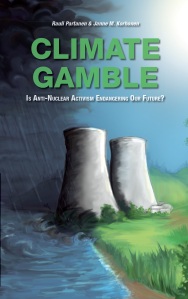I want to preface this article by reiterating that unambiguous call from no less than the Intergovernmental Panel on Climate Change for the dramatic and inclusive expansion of all zero- and low-carbon energy technologies
which was released in April 2014. This’ll be important later.
This chart visualises the results of surveys conducted in Australia on attitudes to nuclear energy as a tool for climate action, before and after the Fukushima nuclear accident.
The open access paper contains valuable context and discussion. It’s worth a read, even though its framing is arguably simplistic: renewable energy is once again the alternative to nuclear energy, and the actual term “renewables” is never expanded. Renewables: solar, wind, geothermal… are biomass and hydroelectric included in this context? The wording of the survey question, revealed in the supplementary data, includes only solar and wind, a tendency that has lately been described as a “subtle form of miscommunication” which will arguably do little to help the climate cause.
However, I see three main questions raised by this research, going forward. First is to do with the fact that it was published several months before the IPCC Fifth Assessment Report was released. Working Group 3 identified nuclear energy, alongside renewables (all of them) and fossil fuels with CCS as essential energy sources requiring marked expansion. What would be the result of a survey of support for nuclear energy, in the context of climate change, which included a primer on the IPCC’s view regarding its necessity?
 Second, we have since had no less than a royal commission into the nuclear fuel cycle in South Australia. While limited in some aspects mainly by time, the royal commission welcomed and heard from the full spectrum of stakeholders, from peak professional engineering bodies to groups and individuals who make no secret of distrusting and rejecting all authoritative knowledge to do with nuclear science. This included the persistent objection regarding the full lifecycle carbon emissions of nuclear power plants, which were concluded to be as low as that of wind by the royal commission.
Second, we have since had no less than a royal commission into the nuclear fuel cycle in South Australia. While limited in some aspects mainly by time, the royal commission welcomed and heard from the full spectrum of stakeholders, from peak professional engineering bodies to groups and individuals who make no secret of distrusting and rejecting all authoritative knowledge to do with nuclear science. This included the persistent objection regarding the full lifecycle carbon emissions of nuclear power plants, which were concluded to be as low as that of wind by the royal commission.
I recommend reading the royal commission’s full conclusions. What would survey results look like after considering them? The closest we can get is the self-selected 2016 “Your state, your say” Sunday Mail poll.
 Again, self-selected, so of arguable value. But I would argue that ardent, social media-connected nuclear opponents are overly represented here (if anyone is) thanks to the sorts of efforts made by their thought-leaders in South Australia at the time. (Readers of my blog know I was a vocal supporter of the inqury process, living in that state at the time, but I didn’t see this poll shared in any pro-nuclear discussions or even hear about it till it was finished). However, that is only my opinion.
Again, self-selected, so of arguable value. But I would argue that ardent, social media-connected nuclear opponents are overly represented here (if anyone is) thanks to the sorts of efforts made by their thought-leaders in South Australia at the time. (Readers of my blog know I was a vocal supporter of the inqury process, living in that state at the time, but I didn’t see this poll shared in any pro-nuclear discussions or even hear about it till it was finished). However, that is only my opinion.
Recent polling shows high support for the South Australian government’s current bold plans for state energy security. This wasn’t framed with a nuclear alternative, nor were the climate-related issues of reliance on natural gas, or the lifecycle emissions of batteries addressed, which isn’t a criticism but more to highlight how returning the issue back to aggressive decarbonisation to save a habitable climate quickly makes it far more complicated than a popularity contest.
Lastly, much more time has now passed since the Fukushima accident, and insistent, dire predictions of doom are now largely the domain of conspiracy theorists. You can read about the harm of the over-reaction here, how nobody will die from radiation here, and how the Japanese prefecture is recovering here.
In all the consultation by the royal commission, nobody suggested somehow procuring antique 1960’s boiling water reactors to install in South Australia (let alone Soviet-era RBMKs, the design at Chernobyl). Yet, safety worries about nuclear technology invariably boiled down to pointing at such old designs, when it’s the modern, modular designs that have obviated the old risks which realistically need to be considered in Australia’s future decarbonised energy mix. Just like consideration and redesign after airline accidents make travelling by plane even safer today, modern nuclear has improved dramatically. What would survey results look like if this simple bit of obvious-when-you-think-about-it context was included?
I’d like to see the answers to these questions, but I’d like to see better education and collaboration on clean energy more, and even more importantly an inclusive, historically-guided and innovation-focused response to the need to expand energy production while also decarbonising its fuel sources. I hope there are a lot of yes votes for that.






